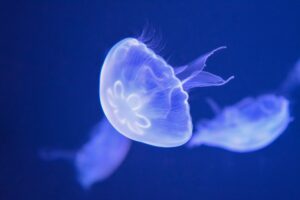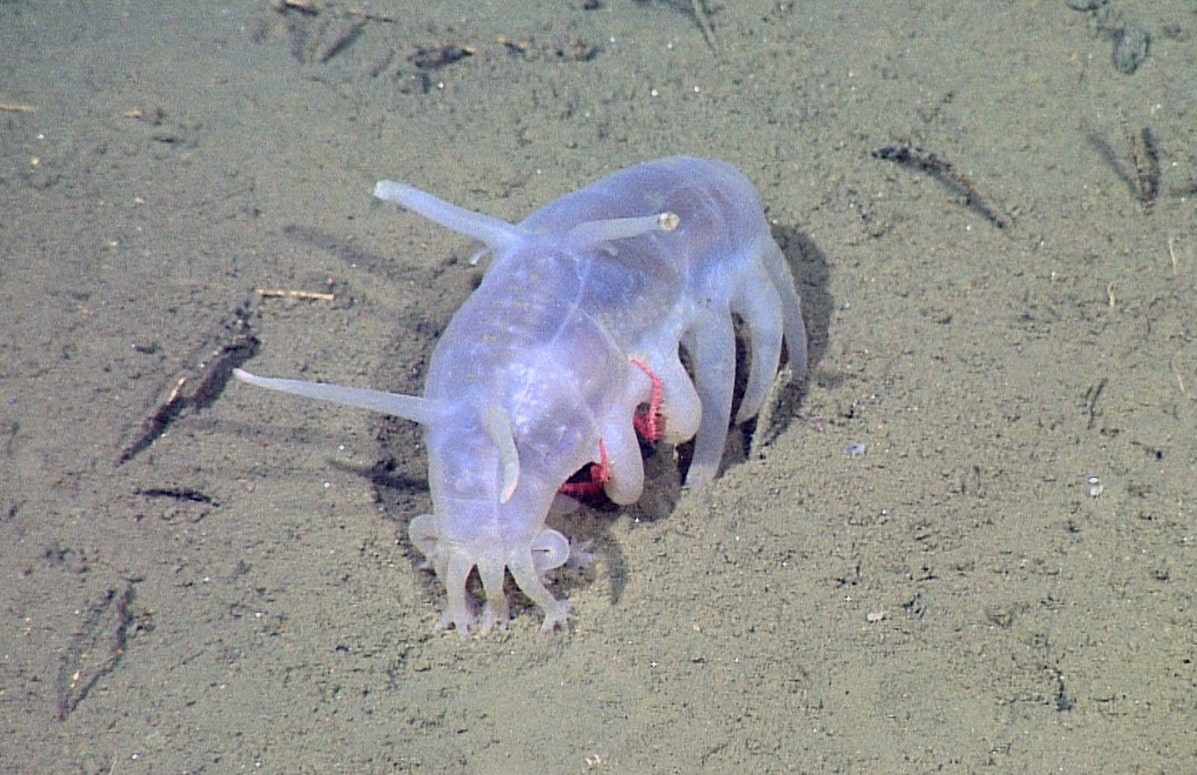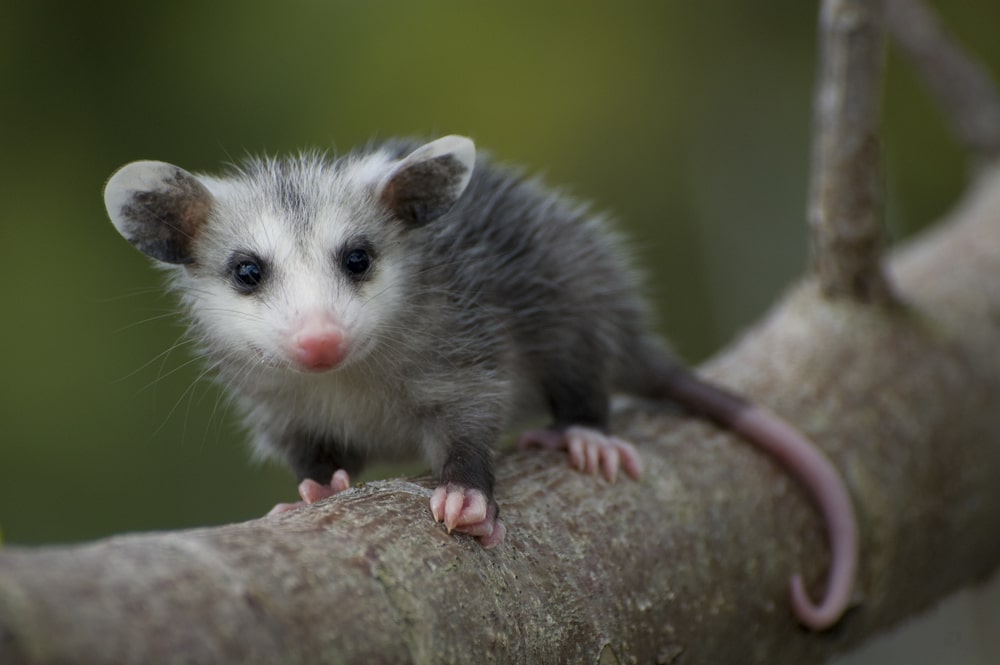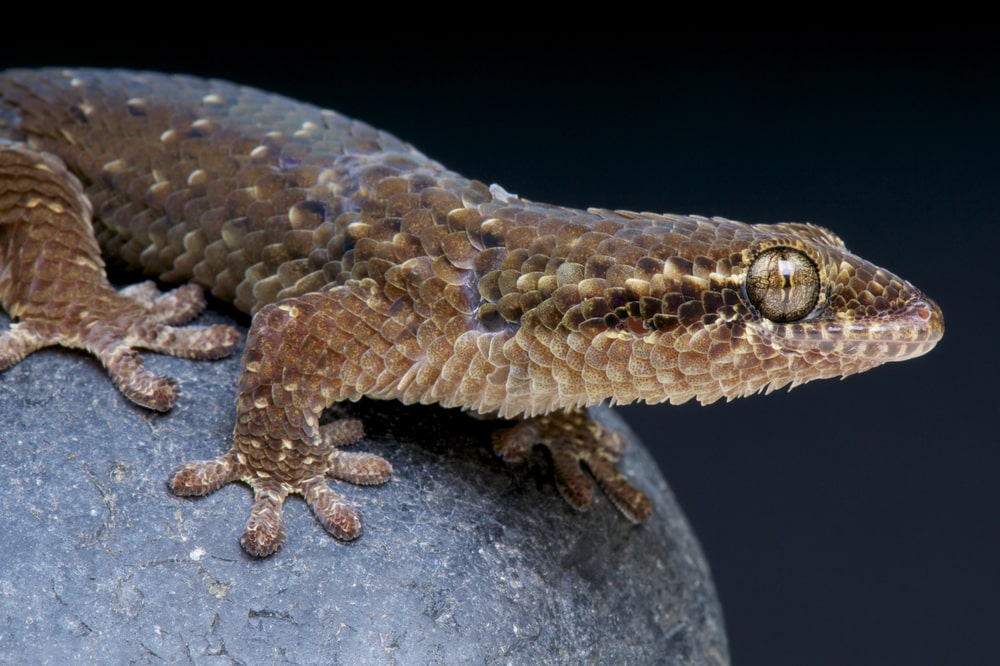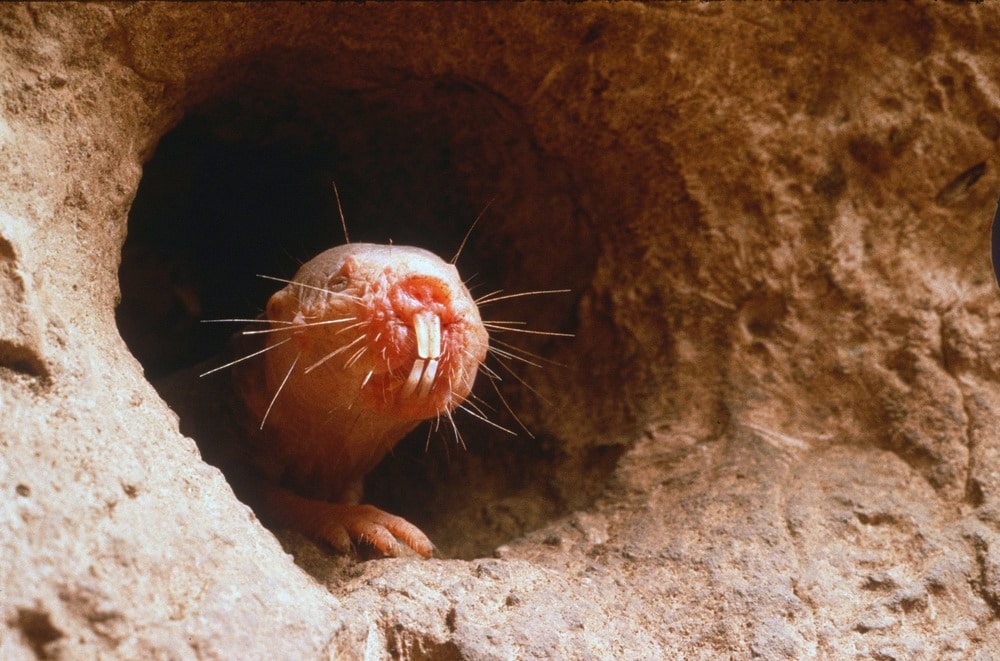Moon Jellyfish fun facts, How Moon jellyfish Reproduce?
The name Moon Jellyfish is appropriate considering these cnidarians have been to space. They were shipped off space as an examination moon jellyfish have crystals in their bodies made of calcium sulfate which helps them determine their orientation in the water based on gravity.
Humans have a similar crystal in their ears which helps us determine the tilt of our head as well as our forward motion.
Moon Jellyfish
The findings concluded that the moon jellyfish who were born in space and then traveled to earth ended up developing identically to an earth-borne moon jellyfish but the space-borne jellies experienced vertigo which affected their motor skills. Potentially this could mean that if humans ever intend to live outside of earth’s gravity field then this could pose an obstacle we’ll have to face.
Coming back to earth Moon Jellyfish are sometimes called saucer jellyfish and they get their common names from their spherical appearance. They can be found in tropical and temperate oceans overall and will quite often remain close to the top of the water column they will also drift into brackish water or water consisting of both salt and fresh water. They have very little control over where they swim and sometimes wash up on beaches.
Facts about the Moon Jellyfish
Although they do sting their stinging cells don’t penetrate human skin very well so they often leave little to no marks on our skin those with more sensitive skin or thin skin may be more affected. Moon jellyfish can grow to be more than a foot in diameter and are usually a semi-translucent white color although their color can change based on what they eat. Crustaceans will turn them pink or purple or orange.
They also eat plankton fish eggs and even other jellyfish food is gathered by mucus-covered oral arms that hold the food in place while it is carried to the mouth. There are about two dozen currently classified moon jellyfish species but they can be challenging to distinguish from one another. The most standout feature for the group as a whole are the four pronounced horseshoe-shaped regions within their bell these are where sperm or eggs are stored depending on the sex of the jellyfish.
Moon jellyfish have a pretty fascinating life cycle when larvae from fertilized eggs hatch they will advance toward the sea floor find something to attach to and develop into polyps. The polyps will then produce clones of themselves that will detach from the polyp. These are called effery and will end up growing into adult moon jellyfish which are called medusae.
The polyps will do this for upwards of 25 years but medusae usually don’t live past their first. They’re eaten by sea turtles sea birds other jellyfish and many fish species.
